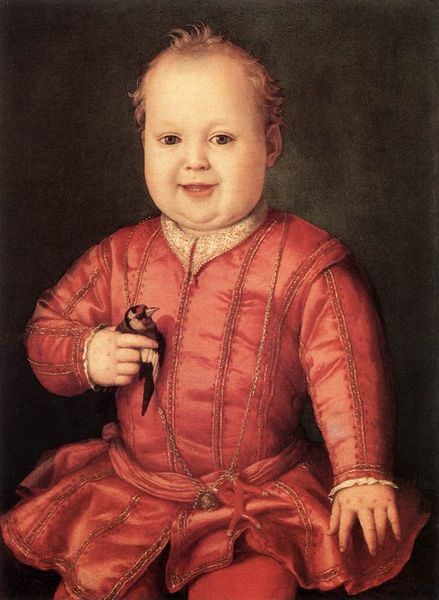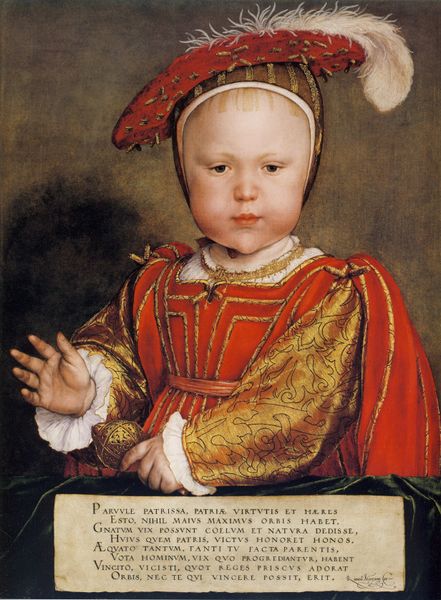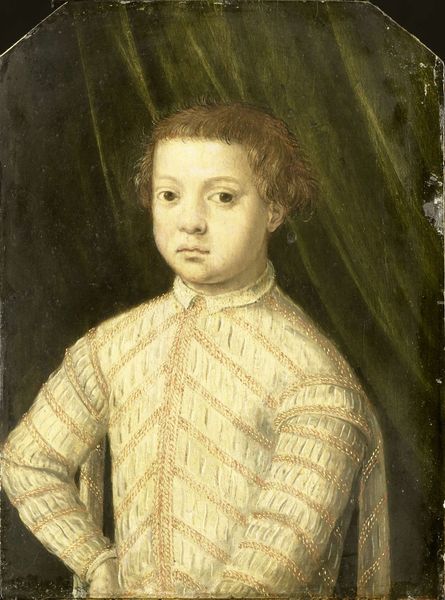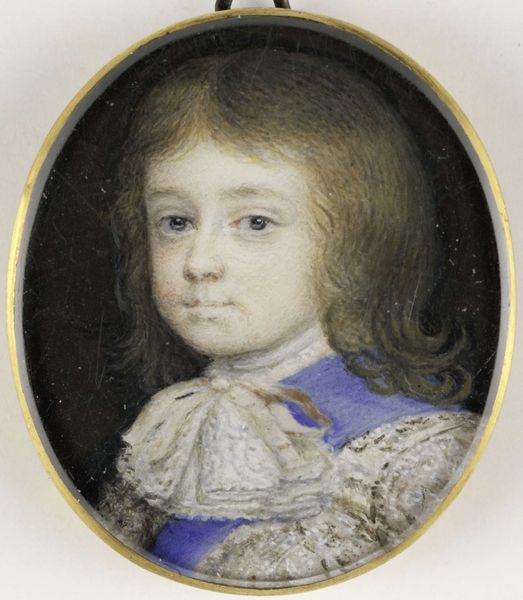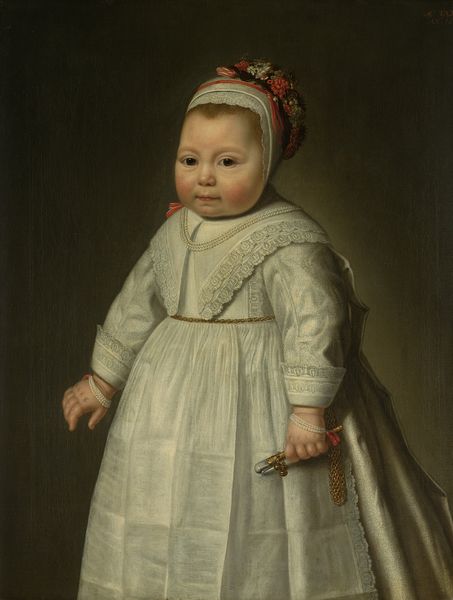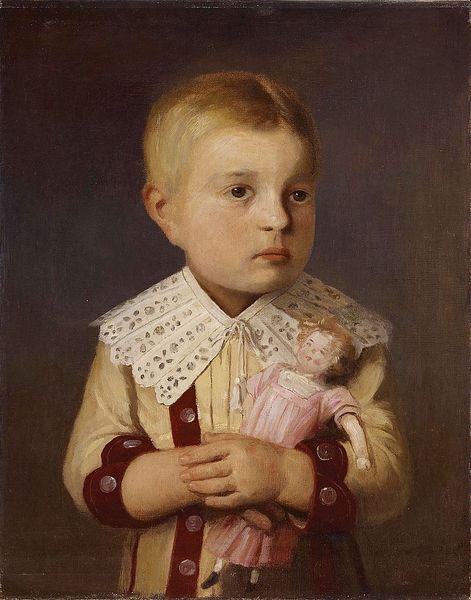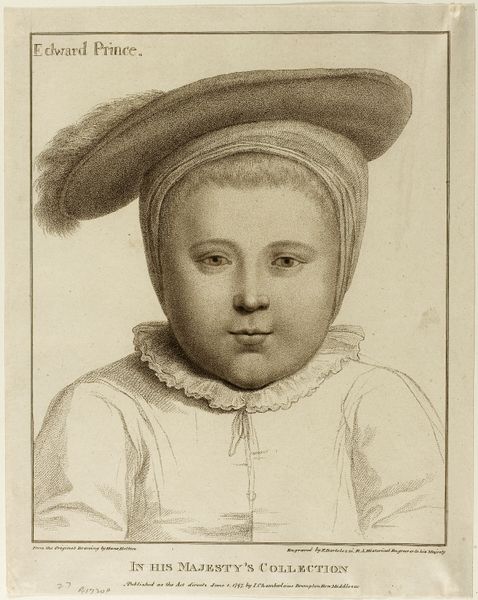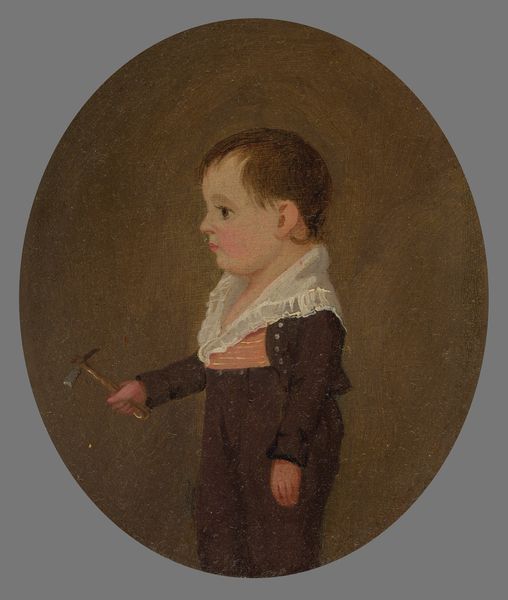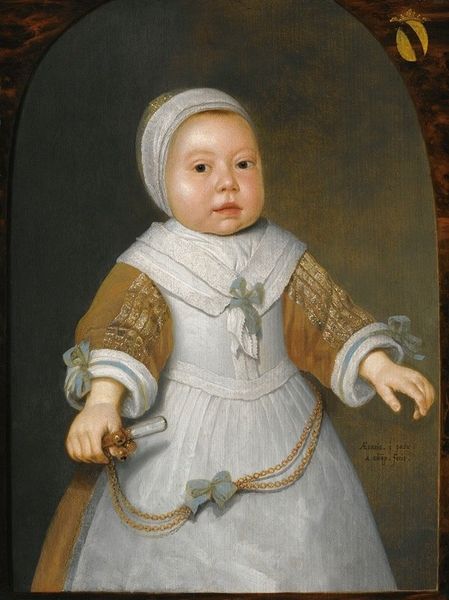
oil-paint
#
portrait
#
portrait
#
oil-paint
#
figuration
#
child
#
italian-renaissance
Dimensions: 38 x 42 cm
Copyright: Public domain
Curator: This is Agnolo Bronzino’s portrait of Don Garcia de’ Medici, painted around 1550. As we consider this image within its historical moment, it’s crucial to acknowledge the context of court portraiture and the intersection of power and representation in Renaissance Italy. Editor: My first impression is how… regal. It's such a serious little face. That deep crimson robe and the jeweled pendant suggest tremendous wealth and position. What a weighty gaze from someone so young! Curator: Absolutely. Bronzino was a master of conveying social status and projecting dynastic power. The opulent clothing and jewelry are not merely decorative; they are signifiers of Don Garcia's place within the Medici hierarchy. The composition follows a carefully constructed formula of early modern statecraft and noble persona production. Editor: I see that. But I’m also getting something unexpected... a sense of isolation. That cool blue background only emphasizes how completely this child exists within the frame of royal obligation. Did he ever get to just be a kid, or was it portraits and posturing all the way down? Curator: It's tempting to read a contemporary understanding of childhood onto this image, but that would be anachronistic. Rather, it presents an understanding of this figure as an agent for his familial representation within the machinations of larger societal concerns. Consider what role lineage played in Florentine court dynamics. Editor: True, and I suppose our ideas of “childhood” have shifted. But that almost makes it sadder! This exquisitely rendered boy, draped in power… what agency did he truly possess? It's not just a portrait, is it? It is a display. It reminds me a little of heavily armored knights: you're not seeing *them*; you're seeing the *symbol*. Curator: Precisely. Through Bronzino's skilled technique, this image conveys far more than a likeness; it offers an articulation of family legacy. It encapsulates the ideologies of its time. Editor: So, beyond its surface beauty and the exquisite brushwork of Bronzino, this is really about the machinery of influence—even for those who are literally still children. Gives you a lot to think about, doesn't it? Curator: Indeed. Art serves as a point of access to critically analyze these forms of social infrastructure, as well as our personal relationship with representation itself.
Comments
No comments
Be the first to comment and join the conversation on the ultimate creative platform.
